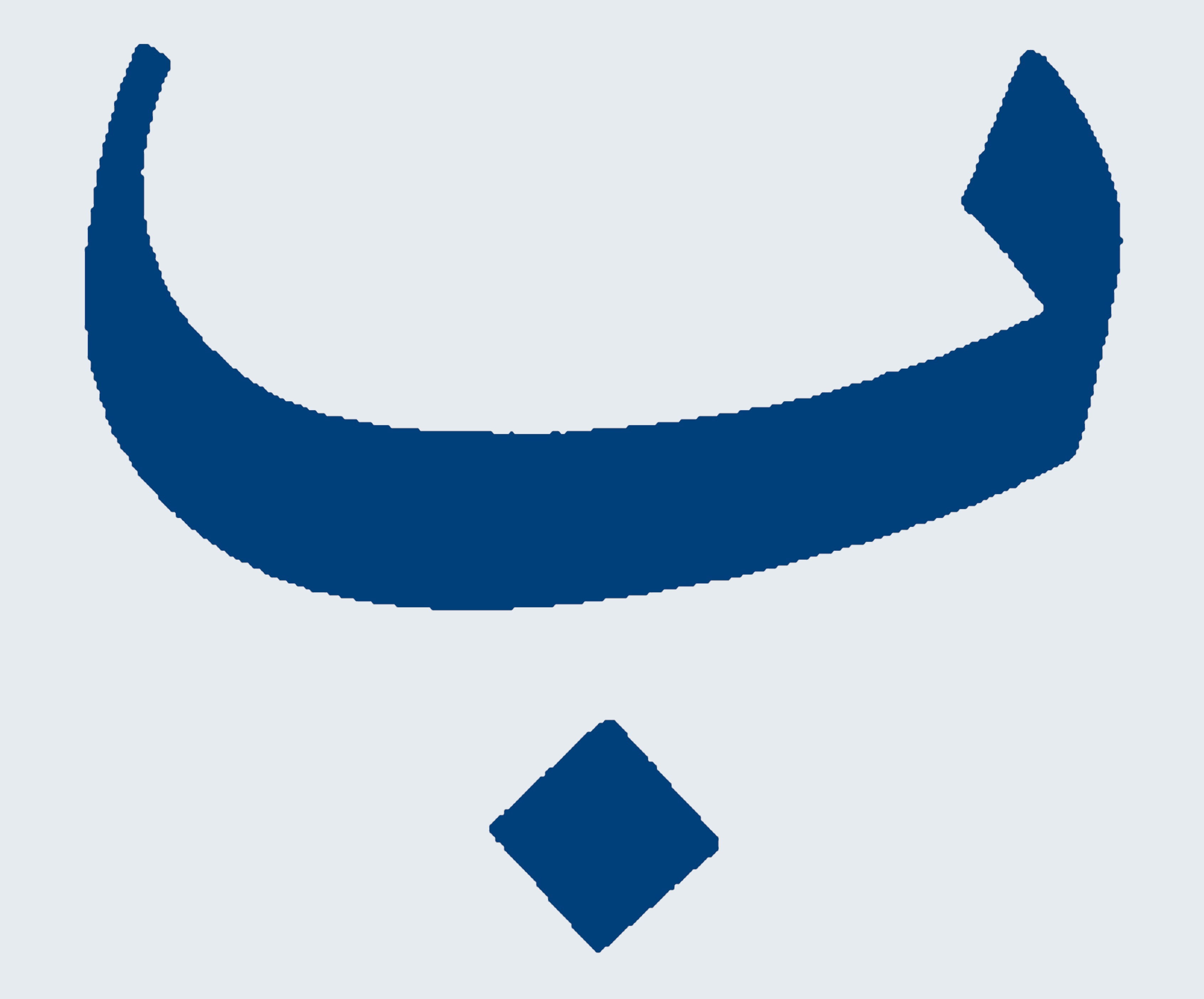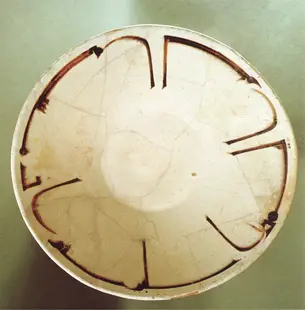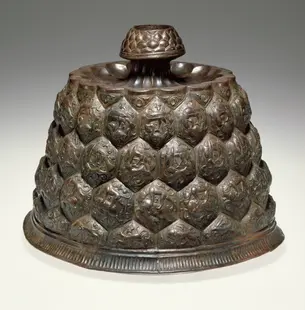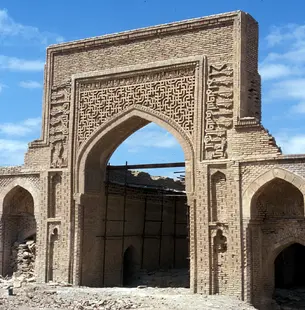Khurasan – Land of the Rising Sun. A cultural landscape as centre for the formation of material culture in the Islamic World, and its place in collections and museums
Partners:-University of Bamberg, Coordinator: Prof. Dr. Lorenz Korn, Islamic Art and Archaeology; Museum of Islamic Art (Staatliche Museen zu Berlin Preußischer Kulturbesitz); Linden-Museum Stuttgart (State Museum of Anthropology)
Funding: Federal Ministry of Education and Research (BMBF), programme: “The Language of Objects”
Duration: 2014-2017
Summary
Khurasan, A Vanished Cultural Landscape
Khurasan, once a landscape of central importance for the Islamic World, has almost vanished from present-day maps. The „Land of the Rising Sun“, located between the Iranian plateau and Central Asia, formed one of the wealthiest provinces of the Caliphate in its classical period (8th – 10th centuries). Long after this, it remained a fixed term in the cultural geography of the Islamic East. Due to political developments of the Early Modern period and the colonial era of the 19th and 20th centuries, its territories became politically divided and lost its former importance.
A Focus on Objects of Art and Buildings
Objects of art and buildings from the Islamic period are at the heart of this research project. The Islamic art of Khurasan, be it objects of use in elegant design, or impressive architecture, have long formed a particular incentive for buyers, collectors and art historians. They became kernels around which questions cristallized, as to how Khurasan can be defined and reconstructed as a cultural territory. This implies looking at structures and cultural developments within Khurasan, as well as relations with neighbouring regions. One of the main objectives is a structured description of the widely scattered remnants of material culture, from the Early Islamic period until the termination of the culturally leading role of Khurasan within the wider region. Its material basis is formed by groups of objects in museums, among which metalwork and ceramics stand out. In addition, selected buildings can function to determine sub-regional affiliations, according to their formal properties. Besides, it is asked what place Khurasan is allotted in museum presentations in museums of the region today, and how works of art from Khurasan of the Islamic period are linked with historical terms.
Results of research are to be implemented in the new presentations of museum holdings in Stuttgart (Khurasan gallery) and Berlin (new wing of the Pergamon Museum)
Teams within the project
The team headed by Dr. Ute Franke has been working at the Museum of Islamic Art in Berlin. The focus is on the distinction between the typologically and stylistically closely related ceramics of Nishapur, Afrasiyab and Tashkent. Apart from mutual influences between these centres, continuities from pre-Islamic periods regarding forms and motifs has to be considered, as well as the exchange with other regions of the Islamic world (Iraq). Typological comparisons between wares from archaeological excavations with museum holdings, also including scientific analyses, are targeted to determine provenances of museum objects and to distinguish luxury wares from common wares.
The team directed by Dr. Annette Krämer has been located at the Linden Museum Stuttgart and in Bamberg. On the basis of typological comparison and integrating scientific analysis, it focused certain groups of Khurasanian metalwork that are distinguished by their elaborate casting technique or by hammered decoration (repoussé), with the goal to refine the chronology and the geographic attribution of these objects. On another level, the question will be approached which technological and artistic innovations radiated from Khurasan to other regions.
Architecture: This sub-project has been affiliated to the University of Bamberg. Referring to the central questions of research, monuments in Khurasan are studied with regard to their relations with other parts of the Islamic world, especially Central Asia, Western Iran and Iraq until the 13thcentury. However, this includes revising established datings for some buildings. This is also true with regard to the architecture of the 16th and 17thcenturies, for which fundamental questions of patronage and style are also studied.
Publications
- Jangar Ilyasov, Lorenz Korn and Ravshan Imamberdyev: Novy tip abbasidskogo dirchema iz Šaša, Scripta Antiqua 5 (2016), 367-394.
- Jangar Ilyasov: A celebrated bowl in the Freer Gallery: Nishapur, Samarkand or Tashkent, Tribus 65, (2016), 156-177.
- Saida Ilyasova, Jangar Ilyasov, Ravshand Imamberdyev, E. Ischakova: Net blaga v bogatstve: glazurovannaja keramika Taškentskogo oazisa IX-XII vekov, Moskau 2016.
- Jangar Ilyasov, Lorenz Korn, Ravshan Imamberdyev: A new Abbasid dirham Type from al-Shash. The Numismatic Chronicle 179 (2019), S. 279-293.
- Lorenz Korn: Art. "Bukhara, art and architecture", in: Encyclopaedia of Islam, THREE. Edited by: Kate Fleet, Gudrun Krämer, Denis Matringe, John Nawas and Everett Rowson. Leiden 2019. Brill Online: referenceworks.brillonline.com/browse/encyclopaedia-of-islam-3)
- Lorenz Korn: Ribat-i Mahi (Khurasan-i Razavi, Iran): Evidence of a Saljuq Building Inscription, in: Alireza Anisi (ed.): Adle Nāmeh. Studies in the Memory of Chahryar Adle (ʿAdl Nāma. Yādnāma-i Šahryār ʿAdl), Teheran 1397/2018, S. 75-97. Post-print online 2020: fis.uni-bamberg.de/handle/uniba/47010, DOI: 10.20378/irb-47010.
- Kourosh Rashidi: Openwork in Khurasanian Metalwork of the Pre-Mongol Period. PhD Dissertation, University of Bamberg 2019. Online publication 2020: fis.uni-bamberg.de/handle/uniba/48855.
- Lorenz Korn: Das Minarett von Jar Kurgan und seine Inschriften, in: Sebastian Hanstein – Aram Vardanyan – Peter Ilisch (eds.): Studia Numismatica et Islamica in Honorem Lutz Ilisch. Festschrift zum 70. Geburtstag von Lutz Ilisch, Berlin 2022. 303-325
- Lorenz Korn: The Mausoleum and the Tower at Sangbast, Touchstone for the understanding of the pre-Mongol architectural history of Khurasan, in: Robert Hillenbrand (Hrsg.): Iranian Architecture, 1000-1250, Edinburgh (in preparation).
- Lorenz Korn, Ute Franke und Annette Krämer (eds.): Khurasan: Heartland of Islamic Art and Culture From Early Islam to the Mongols and Beyond (in preparation).



